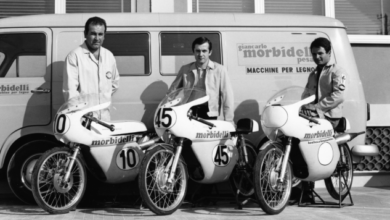June 4, 2007: Identifying sales and F&I processes to improve
This series of articles recaps a portion of the opportunities that were uncovered by Gart Sutton & Associates’ powersports specialists during actual consulting visits.
These opportunities are followed by recommended actions that address the issues. The goal of this series is to provide you with ideas to help you improve your dealership.
The focus for this report visit was to determine the cause for the lack of profitability in P&A and create proper categories to monitor the inventory, develop inventory tracking systems and improve efficiency in the P&A Department; provide training on the value of offering F&I products to all customers; and install the processes necessary to make these departments into more profitable contributors to the dealership’s bottom line.
This is the third in a series of four articles that will focus on this dealership. The May 14 edition dealt with achieving a more profitable parts department, and this column looks at the processes in place in both the sales and F&I departments.
Dealership Details
This small, multi-line dealership is located in a rural market that is a popular destination for year-round recreation. They recently completed a multi-phase dealership remodeling project. Their volume is less than 500 units annually. Although they reported gross sales of nearly $4 million, they ended up losing money. GSA consultants discovered that all departments were below recommended benchmarks. The P&A Department was showing a gross profit margin of 25 percent. Very few of the profitable F&I products were being offered to the customers. The dealership is carrying a very large accounts receivable and interest is not being charged on past-due accounts. No independent audits are being performed to verify the accuracy of financial data.
Sales and F&I Departments
Sales and F&I are handled by the same staff. The sales manager is also the F&I person, with some help from the other salespeople. The sales manager understands the concept of a structured selling process, but has not been following one or teaching it to the sales staff. The sales team is letting the customer control the process. In general, it consists of the customer asking how much a unit is, the salesperson quoting a price and asking if they can write it up. There is no written policy for greeting, utilizing a sales process, capturing customer information, prospecting for additional sales or customer follow-up for referrals. There is no written demo ride policy. Customers and dealer staff are allowed to ride demos without wearing helmets.
The sales manager understands many of the F&I products but does not really understand their value to the customers. Consequently, he is reluctant to present them to the customers. Their penetration levels on the few OE products they offer are very low. No non-OE products are offered. No attempt is made to convert bank and credit union customers to dealership financing. This reduces their profitability for F&I as well as for P&A since they lose the add-on opportunities that arise with dealership financing programs. Deal jackets and credit applications are not being kept in locked cabinets.
Recommended Actions
Author, speaker and educator, Gart Sutton has been retained by every major powersport manufacturer/distributor. He is a frequent keynote speaker for national motorcycle conventions and state motorcycle dealer association events. Visit www.gartsutton.com




